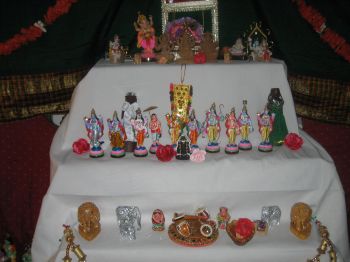
For many people, the real scare this Halloween may have nothing to do with ghosts or spirits. If only unemployment, rising healthcare costs and piling bills would simply go away from your doorstep as if they were kids dressed in costume. But the fact is, these scares are very much real.
And this has affected the way people celebrate holidays, including Halloween. This is evident from this survey conducted by the National Retail Federation. According to this report in Bloomberg.com, shoppers plan to spend an average of $56.31 on this year’s Halloween, down from $66.54 in 2008. Total Halloween spending is predicted to decline 18 percent to $4.8 billion from $5.8 billion last year, according to the NRF.
(Source : http://www.bloomberg.com/apps/news?pid=20601103&sid=a0EG93b6ksdg)
Which means people may end up spending lesser on costumes, candies and decorations. Some of us probably won’t even be able to go trick or treating with our kids, because of the additional shifts we work.
Have you made changes to your Halloween spending? Tell us.
In the meantime, it’s interesting to see that some families aren’t letting the economy spoil the fun for them and their kids. I spoke to a few women about how much they spend on their kids’ costumes and candies every year and whether this year would be any different. Surprisingly, many of them said this year wouldn’t be any different. When I dug deeper into their answers, I discovered that this may be due to the fact that they already had a tight budget and knew a smart way to spend it. Their answers also had some useful tips that all of us can use to cut back on Halloween spending without cutting back on celebrations.
Shanti, mother of two girls, for example, says she spends about $25 on Halloween costumes for each of her kids. But since she reuses costumes for younger siblings and cousins, she usually ends up spending lesser than budgeted. Priya, another mom shares the same view. She reuses the costume until her daughter has outgrown it and then passes it on to her friends.
Vimala, who has a young daughter, doesn’t spend anything on costumes. She makes her own Halloween costumes from leftover fabric or from her little girl’s existing dresses. She spends about $10 on candies.
Kavitha, who also has a young daughter, says she and her friends swap costumes every year. So when her daughter outgrows a costume she passes it on to a friend with a younger child and she in turn borrows a costume from another friend. This way, not only do she and her friends save on expensive Halloween costumes but they also end up pleasing their kids who end up with a different costume every year.
Julie, who has three boys, says she encourages the kids to come up with a theme and gives them a combined budget for costumes. They are free to spend the amount any way they like. Sometimes they end up buying one full-fledged costume and a few accessories, which they all take turns wearing. Each kid gets to wear the costume for about an hour. Other times, each of them buys elaborate accessories and masks and don’t really buy a costume. This way, they still get dressed up in costume for Halloween, but since they’ve pooled their money and come up with a theme, they really know the value of every dollar spent.
So, there are many ways to celebrate Halloween without being spooked out of your wits by the expense it will bring.
And regardless of whether you save on costumes or candies, there is one aspect of the holiday where you won’t have to spend a dime. And that’s sending Halloween Ecards.
Check out our selection of free Halloween Ecards and pick one you like. Or send a Halloween Photo ecard for a more personal touch. And if you’re the type that prefers traditional Halloween greeting cards, then our Free Printable Halloween Cards section is for you.
Go ahead and send one. Or ten. It will still be free. Now, that’s one Halloween treat that comes with no tricks attached.
Have a Happy Halloween!


